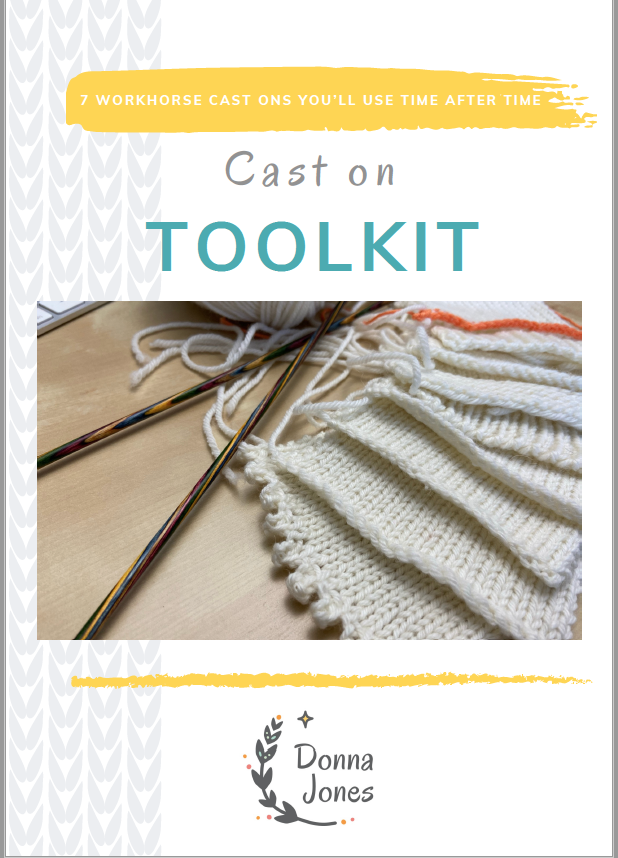Which Cast On Should I use?
If you've ever been disappointed with your knitted projects, such as a saggy bottom (sorry couldn't resist) or a sock you can't get your foot into, then chances are you've used the wrong Cast On. If this applies to you, or you are thinking "wrong cast on - you mean there's more than one?" then read on - as you won't want to miss this series I've created to address this very issue.
Achieving a great finish is about so much more than how you sew it up at the end, and your choice of cast on is the first step. But it can be a challenge to pick your cast on wisely, particularly when there are so many different methods to choose from. To help with this I've launched my Cast On toolkit which should equip you for most of your knitting projects.
Introducing the Cast On Toolkit
Many knitters think there is only one way for casting on stitches, and that is usually the way that we learned when we first began knitting. The truth is there are many ways to cast on, from simple to specialist methods, and how you start your project can make all the difference to your finished projects. If you’ve ever been less than delighted with the edges of your knitted projects then the chances are you may have been using the wrong cast on for your intended project.
Every knitter needs a basic repertoire of staple cast ons, and in this series of tutorials I’ve curated a selection of 7 workhorse cast on methods for knitting that you’ll use time after time. At the end of the series you’ll have a solid foundation for making the most of your knitted projects, and you’ll also learn how to make the best choice of cast on depending on the desired outcome. Having a Cast On Toolkit will transform your knits from ok to impressive, helping you achieve a professional finish, enhancing both the appearance and function of your knits.
Part 1: What to consider when choosing a Cast On for your project
In part 1 I’m setting the scene and talking you through the different types of edging you might need foryour projects. In this tutorial we’ll be looking at a number of things you'll want to consider when deciding what cast on you’ll want to use. This will depend on what type of edge your project needs and the characteristics of each cast on method. Things to consider will include:
elastic versus firm
does it need to be loose for blocking?
stitch pattern compatibility
location egstart of garment, beginning or end or row, button holes
permanent versus temporary - and when would thee apply?
decorative or plain
If you know the qualities you need for your edge, this will help you chose the best cast on depending on the pros and cons that each method offers. In subsequent tutorials we'll look at a series of 7 go to cast ons where I'll show you how to do them and talk about the characteristics of each method.
Watch the video - Part 1
Make your own easy reference tool
If you want to knit along with these, all you need is a pair of needles and a ball of yarn. If you are a Knit Nerd (like me) you might want to knit a sample of each cast on which you can label and keep as a reference tool to help remind you of the cast ons and what they look like.
Get your free copy of the Cast On Toolkit
The Cast On Toolkit is now available as a PDF with all 8 video links and my notes together in one place for your convenience.




